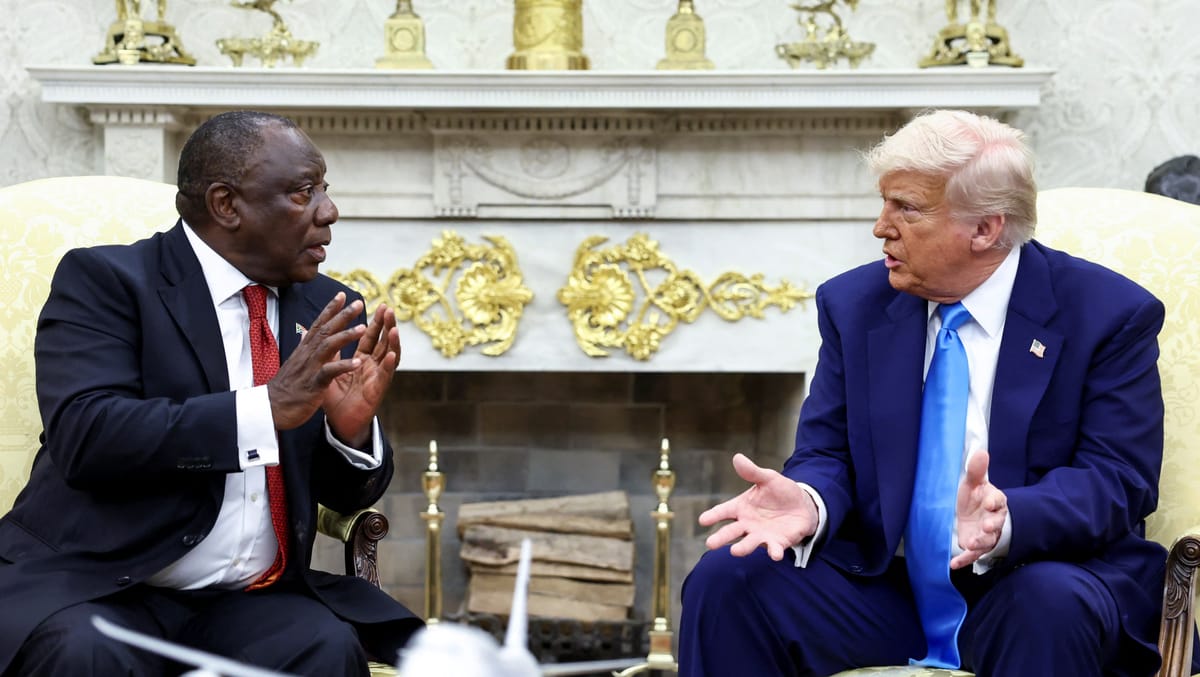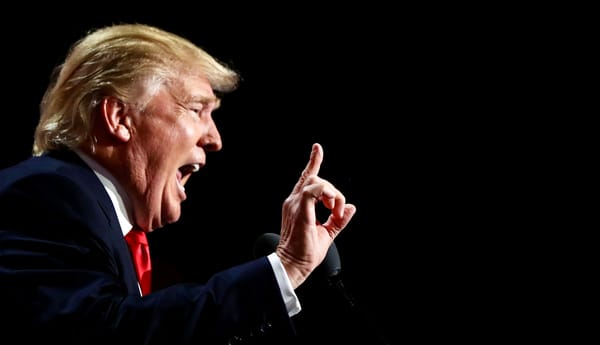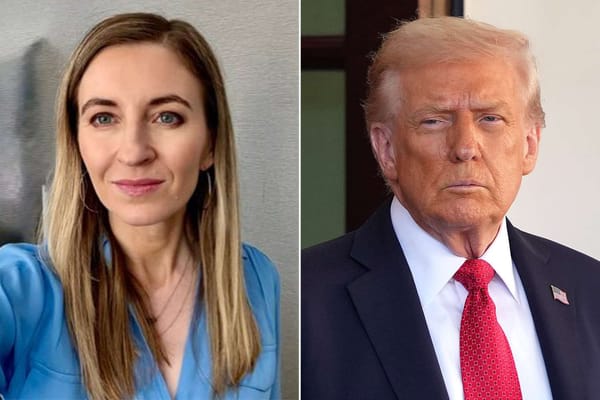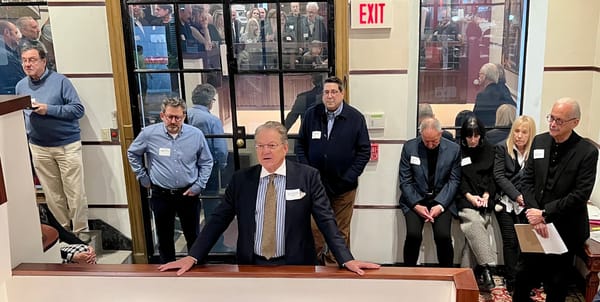An Oval Office invite can turn into a cage match
Trump sandbagged South African President Cyril Ramaphosa with the baseless claim of “genocide” against whites in South Africa.

I am very pleased that President Donald J. Trump has turned routine grip-and-grin diplomatic Oval Office photo ops into meaningful exchanges.
Even when he fills them with unhinged Ideas, and flat-out propaganda.
There is no question that he is the most press-accessible President in U.S. history. That is a plus, even when he has expanded “press” to include barely literate right-wing influencers. That’s his prerogative.
There is something intrinsically fascinating about watching leaders of countries coming to grips, in plain view. It has so much more meaning than the milquetoast statements usually issued at the end of closed-door talks.
But any leader invited to the Oval Office would be smart to think of it as a possible cage match.
I am thinking about the gang assault on Ukrainian President Volodymyr Zelensky, who failed to kiss Trump’s ring, and was subjected to a public beatdown by the tag team of Trump and Vice President JD Vance. The U.S. leaders seemed to blame the Ukrainian leader for his victimization by Russian aggression.
Lesson learned by Canadian Prime Minister Mark Carney, who a few weeks later praised Trump before gently disputing Trump’s moronic and insulting claim that Canada would become America’s 51st state.
Then, Wednesday, Trump sandbagged South African President Cyril Ramaphosa with the baseless claim of “genocide” against whites in South Africa.
Ramaphosa probably expected that, but not Trump’s video propaganda reel that suggested Black African politicians who did call for death to whites were part of the South African leadership. They are not.
Trump also misrepresented a field of white crosses as a mass burial site for 1,000 white Africans. The crosses, according to Reuters, the BBC and The New York Times, “are not gravesites for farmers and were not permanently placed along the road.”
The video of the crosses was posted to social media before a remembrance for a slain white couple in early September 2020, and since have been removed.
A White House official told The Times each cross represented a white farmer who had been killed, but did not explain why Trump had characterized the video as showing burial sites.
Ramaphosa and other SA reps, who called for increasing U.S. trade, did not mention U.S. aid, which Trump recently cut off, citing the false “genocide” claim.
Ramaphosa acknowledged that his country has a very high crime rate, but far more Blacks are murdered than whites.
Trump also claimed farms are being seized from white farmers without compensation.
Ramaphosa gently pushed back against Trump’s accusation, saying farmers were compensated, likening it to eminent domain used by U.S. governments.
“The South African leader had sought to use the meeting to set the record straight and salvage his country’s relationship with the United States,” reported the AP.
“The bilateral relationship is at its lowest point since South Africa enforced its apartheid system of racial segregation, which ended in 1994.”
Like Canadian Carney, and unlike Zelensky, Ramaphosa did not directly challenge Trump’s ill-founded beliefs.
What he did was bring along in his delegation white South African Hall of Fame pro golfers Ernie Els, and Retief Goosen, who were amazingly diplomatic in their remarks to Trump on behalf of their home country.
An avid golfer, Trump called them champions, adding, “I respect champions.”
By the end, when asked if he believed South Africa practiced genocide, as he had claimed many times, Trump replied, “I haven’t made up my mind.”
And it all played out in plain sight.


